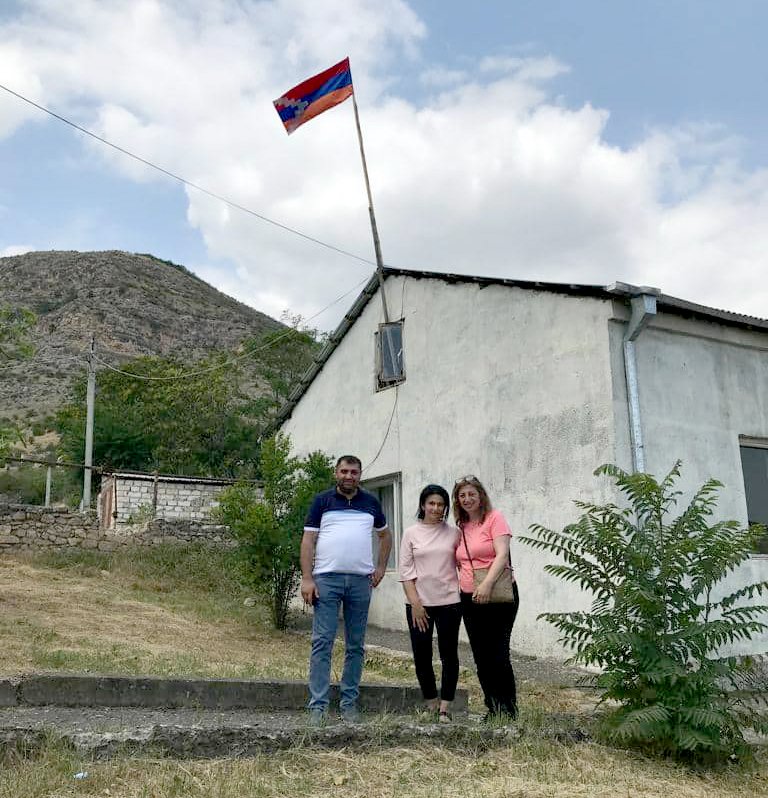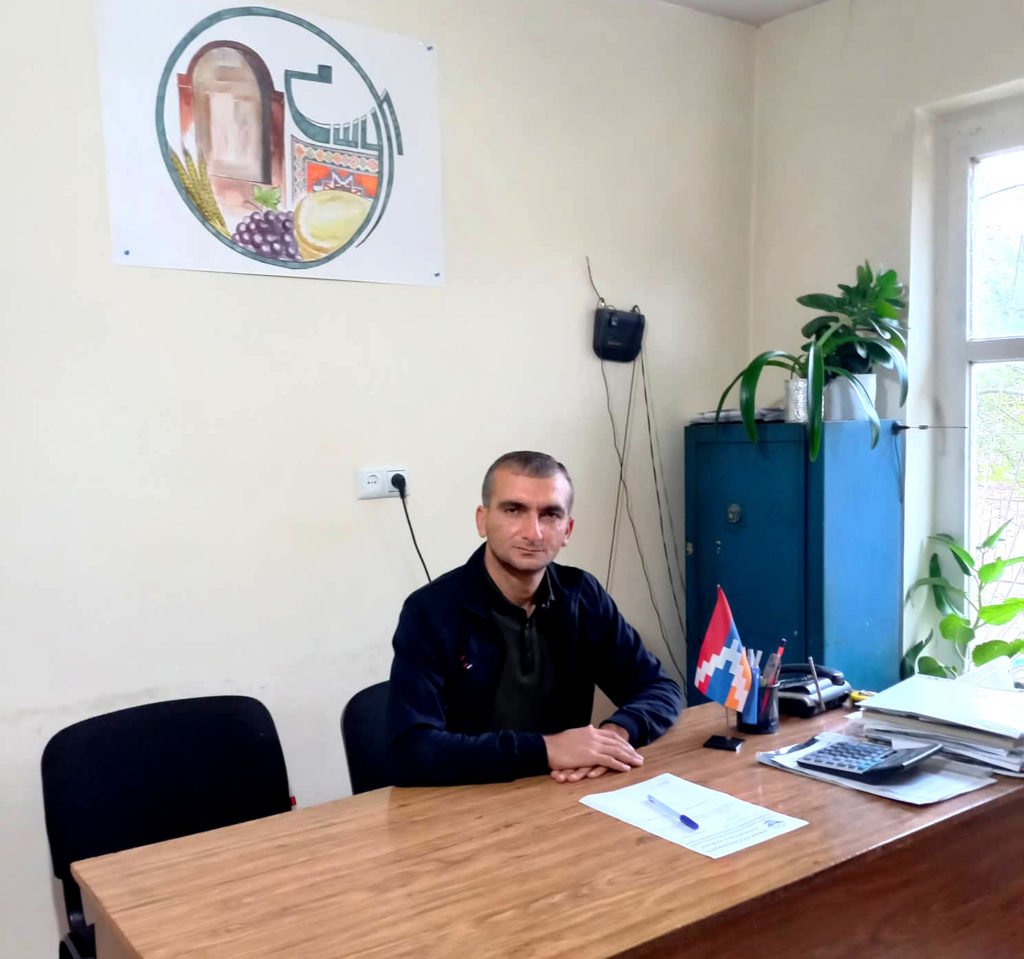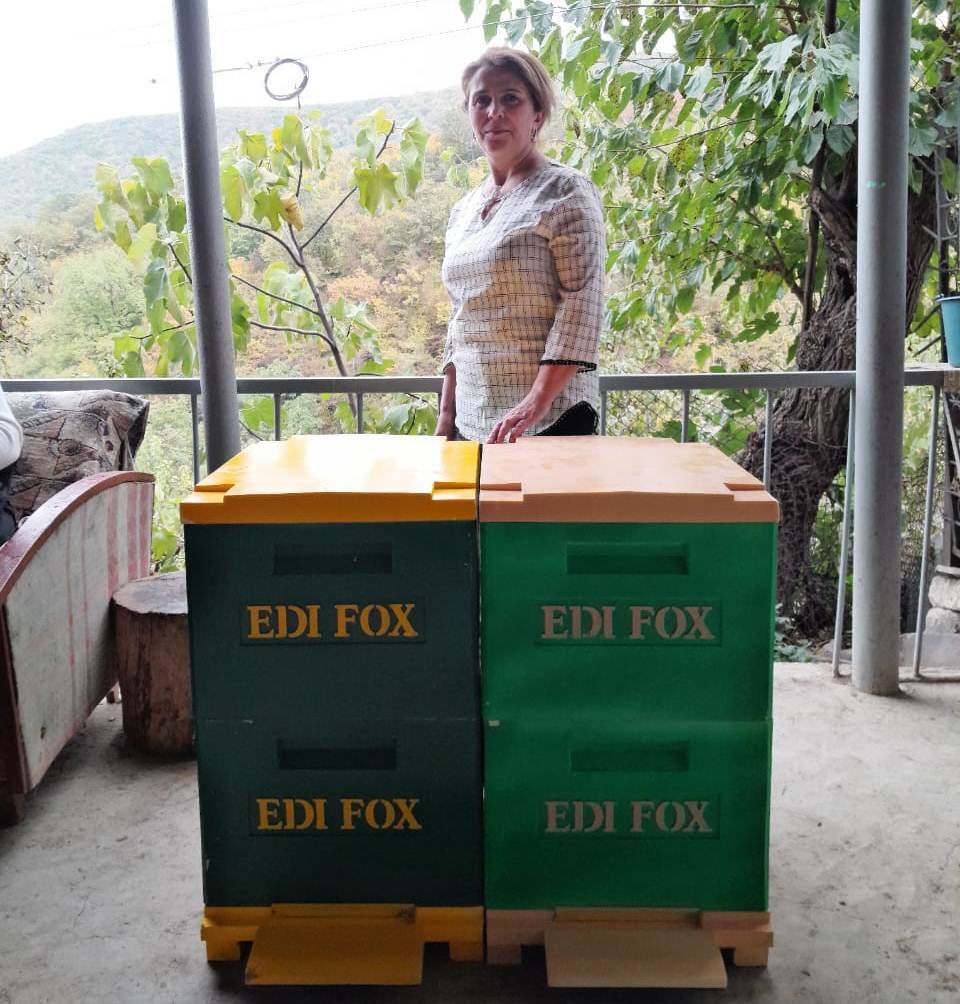Editor’s Note: This is a compiled translation of articles which appeared in Armenian on aparaj.am this month.
Since its establishment in Artsakh in 2006, the ACAA Artsakh Fund charitable foundation has primarily engaged in programs for the development, construction and improvement of the social condition of the population in liberated regions. Today, the fund continues to focus on solving problems faced by the local population and securing their employment. Recently, the Artsakh Fund directed its support to the Hatsi community of the Martuni region.

ARF Eastern USA Artsakh Fund committee member Pauline Dostoumian and director of the fund’s Artsakh office Trdat Martirosyan visited the Hatsi community in June and became familiar with the problems facing the community. Taking into account the suggestions of the members of the community and its leader, it was decided to support the population to engage in beekeeping.

On October 20, within the framework of the beekeeping development program, 12 members of the Hatsi community were provided with a total of 30 beehives made of light polyurethane material. The fund allocated beehives worth 42,000 AMD to each beneficiary, and the beneficiaries will return 25-percent of the money to the Artsakh Fund, according to a contract agreement. All applicants to the program were accepted as beneficiaries. During the distribution of beehives, several more members of the community also expressed their desire to be involved in the project.
In a conversation with Aparaj, Dostoumian said that all the residents of the border villages are determined and want to live on their lands, but sometimes they need support. “The youth want to live on their land. If they had suitable working conditions, their daily life and livelihood would be much easier. Of course, there is the issue of security. In some communities, the enemy is 300 to 400 meters away, which makes it difficult to engage in agriculture and animal husbandry. The residents of the villages said that they will switch from an open to a closed model of animal husbandry, but even then there is a problem of getting used to the new method of animal feed,” Dostoumian said.
“We still need to crystallize these plans to be as effective and sustainable as possible. We want the residents to be able to continue this work in the future without support. It should not be done through individual assistance, but rather so that the whole community benefits. We are not here for just one instance. Our plans are long term,” Dostoumian continued.
The head of the community Santur Sargsyan thanked all the members of the fund for such an initiative, adding that there are many ideas for the development of Hatsi: “We started work a month ago in preparation for beekeeping, providing 20 farmers enough cornflower seeds, which is one of the richest honey-producing plants in beekeeping, for 20 hectares of arable land. Of the 12 beneficiaries of the project, six have many years of experience, and six are new beekeepers. If we make a large profit, we will try to organize a collective sale through exports and through a fair.” The head of the community joked in his speech: “Compared to cattle, bees do not ‘recognize’ the Armenian-Azerbaijani contact line and borders.”

There are people in the village who have been beekeepers for 40 to 45 years. Skilled beekeeper Alexander Ghazyan says he gets 10 kilograms of honey from each beehive, which he sometimes exports to Armenia and abroad. He expressed his willingness to share the secrets of beekeeping with beginner beekeepers.

While choosing their beehives, the women beneficiaries considered the color combinations to make their vegetable gardens more attractive.
The members of the community expressed their gratitude to the director of the fund’s Artsakh office, adding that it is desirable to continue similar programs and visits to communities near the contact line. Hatsi inhabitant Arega Abrahamyan told Aparaj: “Such programs awaken within Armenians the hope of living on their own land and divert our attention from the distressing reality. May God grant Artsakh lasting peace. This is the dream all of us long for. Let villagers cultivate their land again and have their harvest and good fortune.”

Dostoumian says that it is necessary to work in unity to stop the enemy’s plan to depopulate Artsakh of Armenians. “The diaspora should support Artsakh. Sometimes people say that not much will change by helping one family, but every family living here helps solve the problem of the security and existence of our homeland. Diaspora Armenians should not be afraid to live in Artsakh, alongside its people, because there is no other way,” said Dostoumian.
Martirosyan expressed hope that this program will be a means for unemployed families to secure income. Taking into account the interest in acquiring new beehives and the number of new applicants, the ACAA Artsakh Fund will try to extend this program for as long as possible, not only in Hatsi, but also in other Artsakh communities near the contact line.
Beneficiaries, acting as bakers, invited Artsakh Fund members to their homes to taste this year’s honey.
The ACAA Artsakh Fund also supported the ARF Bureau Youth Office Verelk program, allocating $30,000 for its first phase. During her visit to Artsakh, Dostoumian met with the beneficiaries of the program. She says the program will continue to support young people who want to run their own businesses in Artsakh.
Recent Artsakh Fund projects include renovating the banquet hall of the Noragyugh community in the Askeran region and distributing chicks, piglets and calves to a number of residents of the Martuni, Askeran and Martakert regions.


Be the first to comment